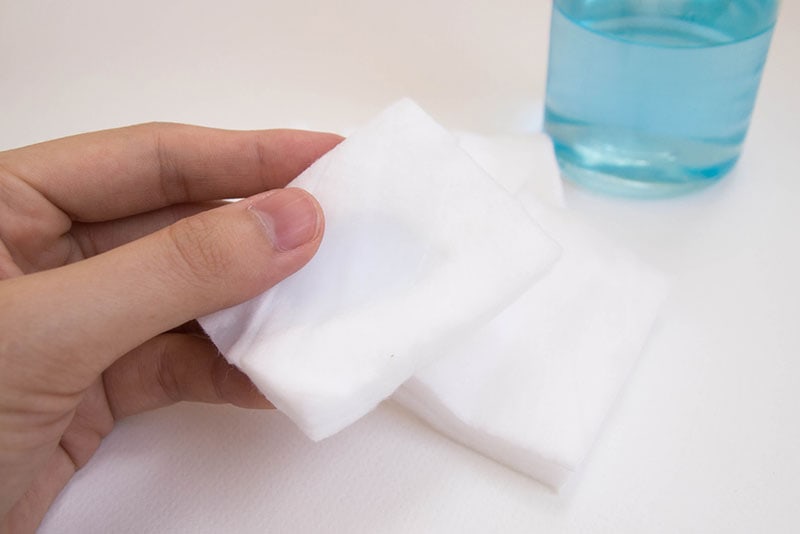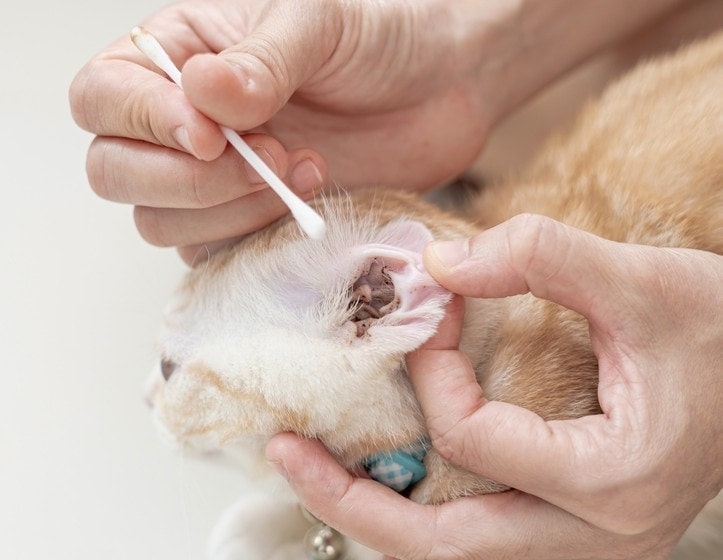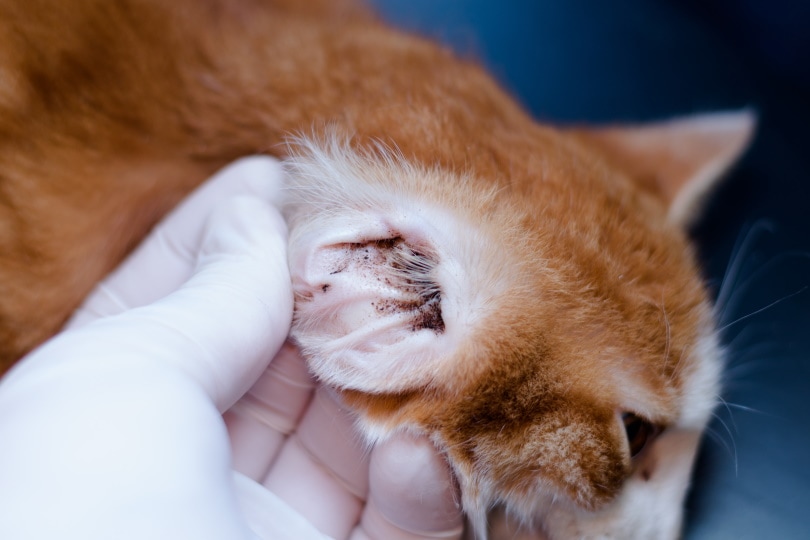
Mites aren’t just a pesky and irritating problem for us—they’re also a real nuisance for our feline friends! Indeed, these tiny parasites love to lodge comfortably in a cat’s ears and can cause intense itching leading to possible infections if they are not removed.
Still, that’s no reason to use just any homemade treatment to rid your cat of these undesirables. Take rubbing alcohol, for example. Although this household product can do wonders for disinfecting small external wounds in humans, it should never be applied to the skin of your four-legged friend.
Read on to find out exactly why it’s not a good idea to use rubbing alcohol to fight ear mites in cats and what treatments vets recommend instead.

What Are Ear Mites?
So, what exactly are mites, and why do they like your cat’s ears so much? In short, ear mites (Otodectes cynotis) are tiny arachnids barely visible to the naked eye. With the naked eye, they can be seen as white specks moving around the external and inner ear.
They are highly contagious and can be easily transmitted from one animal (including cats, dogs, rabbits, and ferrets) to another through close contact. These external parasites thrive in the warm, moist environment of the ear canal, as it’s an ideal breeding ground.
Ear mites feed on the wax and oils in your cat’s ear, which can lead to a range of unpleasant side effects. Common signs of infestations include:

Why Rubbing Alcohol Should Not Be Used to Kill Ear Mites in Cats
Now that you know a bit more about these tiny pests, let’s talk about the problem of using rubbing alcohol to annihilate them.
PetMD has rubbing alcohol (also known as isopropyl alcohol) on its list of potentially harmful cleaning products for pets. If this antiseptic product is used inappropriately (on open wounds, for example), it can cause skin lesions and even delay wound healing.
So, while isopropyl alcohol may kill certain types of mites and insects upon contact, using it in your cat’s ears isn’t a safe solution. Here are a few other reasons:
Instead of relying on rubbing alcohol, it’s best to consult with your veterinarian for a more effective and safer treatment plan.

What Veterinarians Recommend
If you’re dealing with an ear mite infestation in your cat, a trip to the vet is in order. They will provide a comprehensive treatment plan once they have diagnosed that ear mites are the cause of the problem and ensured your cat’s ear drum is in-tact. The treatment plan may include the following steps:
In addition, your veterinarian may want to re-examine your cat 1-2 weeks later to ensure that the mites have been eradicated or determine if another treatment is required.

Tips for Keeping Your Cat’s Ears Healthy
As the saying goes, prevention is better than cure! If you don’t want to face another ear mite infestation, you must take preventative measures to keep your cat’s ears clean and healthy:
Important: When you bring a new cat into your home, it is important to quarantine them from any existing cats you may have. This initial isolation can help prevent the spread of ear mites and other contagious diseases. These parasites are highly contagious through close contact so keep your new cat separated until they have received their monthly anti-parasite treatment.

Final Thoughts
While the idea of using rubbing alcohol to kill mites on your beloved cat may seem tempting, it can actually irritate your poor pet’s ears, leading to more pain, more irritation and an increased risk of infection. It is not an effective solution. This is why it’s always better to consult your vet for anti-parasitic products or other safe medications that are appropriate for your cat. By following these guidelines and working closely with your veterinary professional, you can ensure that your kitty’s ears stay mite free!
Featured Image Credit: tong patong, Shutterstock


